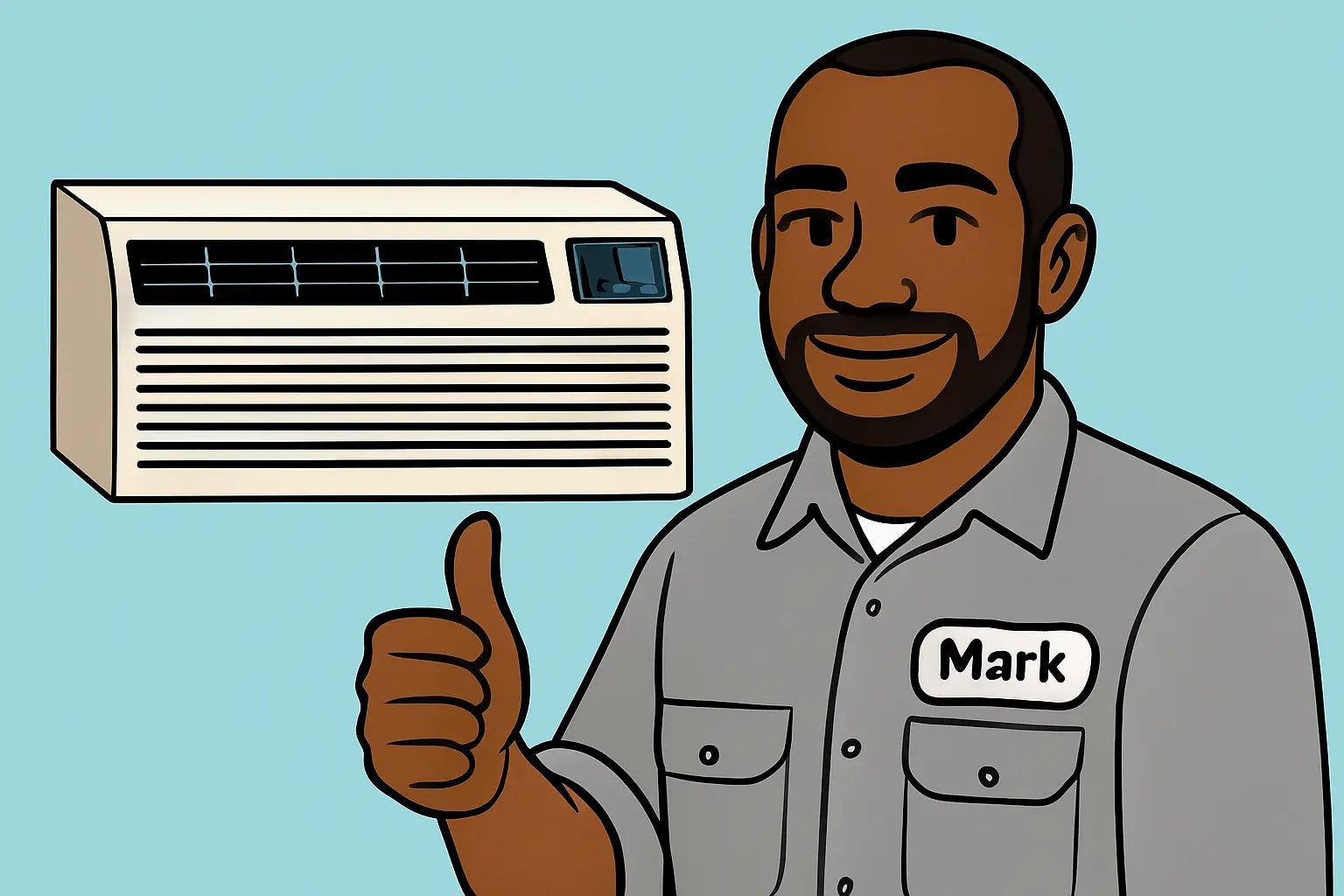Intro from Mark
Mark here—your friendly neighborhood HVAC whisperer. You know how your car needs oil changes, tire rotations, and a little TLC to keep it running? Your PTAC is no different. A few simple seasonal steps can keep your Amana humming like a champ and help you avoid those “why is it 90 degrees in here?” moments. Let’s run through the checklist so you can stay comfy without breaking a sweat… or the bank.
Spring: Pre-Cooling Season Prep
Clean or Replace Air Filters
Dirty filters choke airflow and make your PTAC work harder. Swap them monthly during heavy use. For a quick guide, Energy Star’s filter tips are solid.
Inspect and Clean Coils
Dusty coils = reduced efficiency. A soft brush and a vacuum do wonders. If you need a deep dive, CRC Industries has a helpful coil-cleaning tutorial.
Check Thermostat Settings
Make sure your cooling settings match your comfort and efficiency goals.
Test Run the Unit
Fire it up early in the season to catch any issues before you need it daily.
Summer: Peak Cooling Season
Monitor Performance
If your unit’s struggling to keep up, check for clogged filters, blocked vents, or dirty coils.
Clear Outdoor Obstructions
For through-the-wall PTACs, ensure the exterior grill is free from debris. The U.S. Department of Energy has great advice on maximizing AC efficiency.
Watch for Error Codes
Address any error messages promptly before they snowball into bigger issues.
Fall: Heating Season Prep
Inspect Heating Components
If your Amana PTAC has electric heat strips, check connections for wear or corrosion.
Vacuum Out Dust
Dust buildup on heating elements can cause burning smells or even fire hazards. ESFI’s electrical safety tips are worth a read before firing up the heat.
Seal Drafts Around the Unit
Prevent heat loss by checking and sealing around the wall sleeve.
Winter: Peak Heating Season
Keep Filters Clean
Even in heating mode, clean filters are key for airflow.
Monitor Power Supply
Voltage dips in winter can stress heating components—keep an eye out for flickering lights or breaker trips.
Stay Alert for Strange Smells or Sounds
These can be early warning signs of trouble. Angi’s HVAC troubleshooting guide covers what’s normal and what’s not.
Mark’s Year-Round Pro Tips
-
Log Maintenance – Keep a simple notebook or phone log of dates and what you did.
-
Know Your Error Codes – Your PTAC’s manual is your best friend.
-
Don’t Skip Pro Service – A yearly checkup by a licensed tech can catch what you miss.
Wrapping Up from Mark
Seasonal maintenance isn’t glamorous, but it’s a whole lot cheaper than emergency repairs. A clean, well-maintained PTAC will run quieter, use less energy, and last longer. If you’re ready to upgrade or just want to see the latest specs, check out the Amana Distinctions 12,000 BTU PTAC with 3.5 kW electric heat.
Don't know if you should repair your PTAC yourself or call a pro? Visit: Knowing When to Tackle Amana PTAC Repairs Yourself.
Take care of your unit, and it’ll take care of you.
- Mark out! ✌️🛠️







